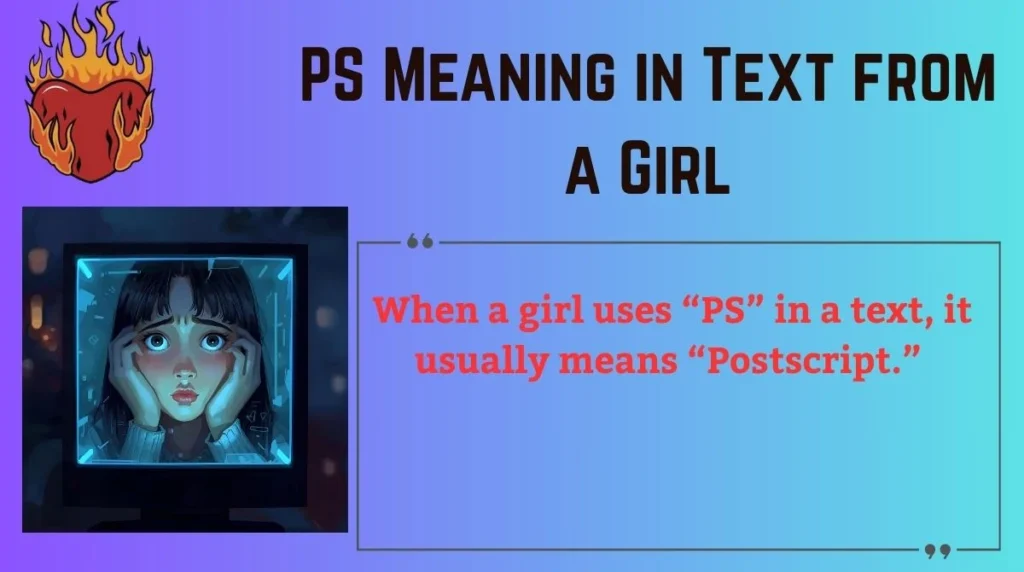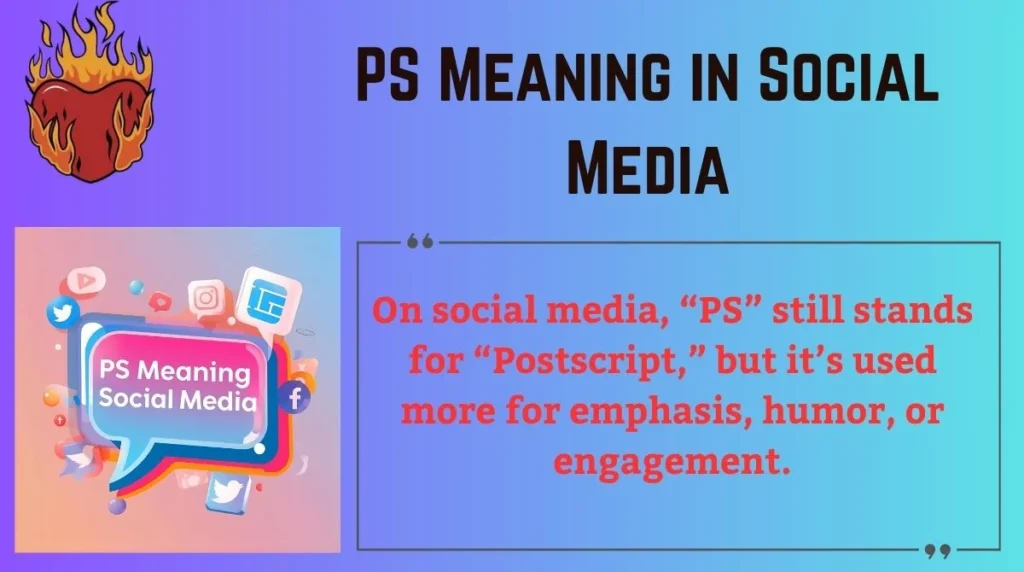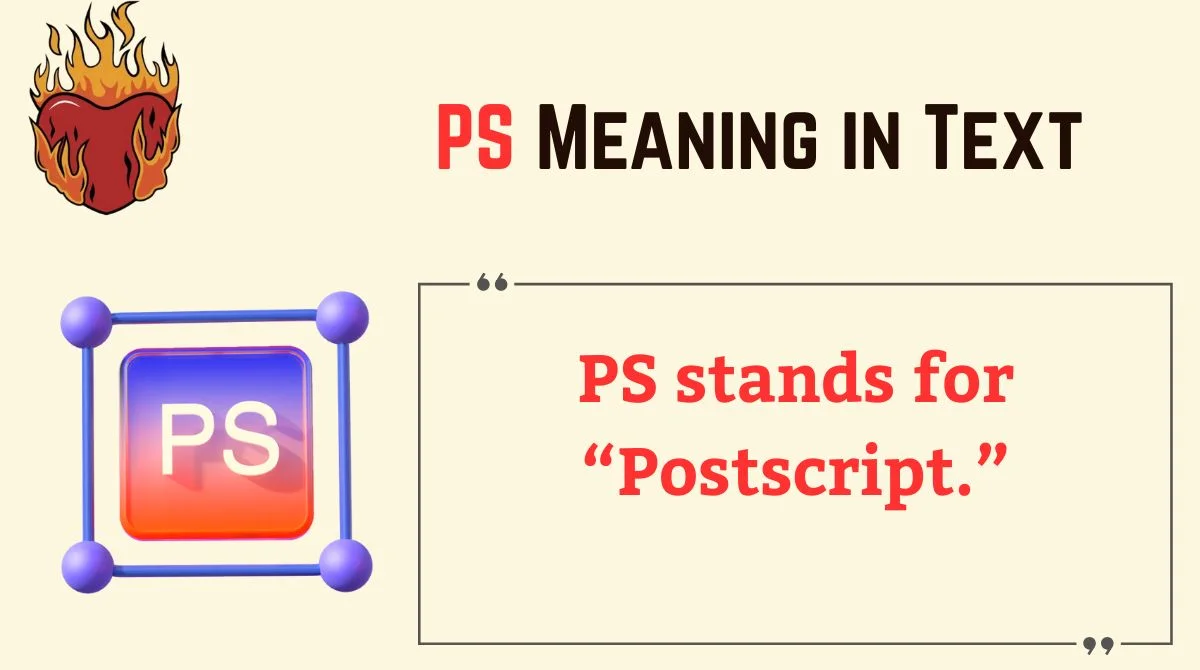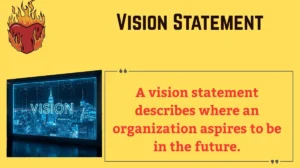Last updated on October 19th, 2025 at 06:49 am
Texting may feel fast and casual, but certain abbreviations carry a surprising amount of history. One of those is “PS”.
You’ve probably seen it pop up in chats, captions, or even emails and wondered whether it’s just old-fashioned or still relevant today.
This guide explores PS meaning in text from its roots in handwritten letters to its modern role in digital conversations.
You’ll learn the history, variations, cultural usage, and even the professional side of this timeless abbreviation.
Definition and Core Meaning of PS in Text
At its core, PS stands for “Postscript.”
- Literal meaning: Postscript comes from the Latin term post scriptum, which translates to written after.
- Purpose: It’s used when you want to add extra information after finishing your main message.
In simple terms, PS in text is a way of saying “By the way, here’s one more thing.”
Example:
- “Had a great time at dinner tonight. PS, don’t forget your umbrella at my place.”
It’s direct, conversational, and works well for both serious and lighthearted contexts.
PS Meaning in Text from a Girl 💌

When a girl uses “PS” in a text, it usually means “Postscript.” It’s a cute or playful way to add an extra thought or side note after her main message — kind of like a little afterthought she didn’t want to leave out.
Here’s what it might look like:
- 💬 “Had a great time today! PS: You still owe me coffee 😉”
- 💬 “Goodnight! PS: You’re adorable 😳”
So when a girl writes “PS”, it’s often her way of adding something sweet, funny, or flirty at the end of her message. Sometimes, it’s also used to tease playfully or sneak in a compliment.
In short, “PS” from a girl means she had one more thing to say — and it’s usually meant to get your attention. 💖
Background and History of PS
The abbreviation PS dates back centuries. Long before texting, writers used it in handwritten letters.
- Origins: From the Latin post scriptum meaning “after the writing.”
- Use in letters: When a person signed a letter but remembered something else, they’d add PS at the bottom.
- 19th and 20th centuries: PS became a common fixture in both personal and business letters.
Even as typewriters and computers introduced editing tools, people kept using PS because it added a personal and spontaneous touch.
“A postscript is more than an afterthought; it’s often the most memorable part of a message.” – Communication expert David Crystal
Usage of PS in Modern Communication
Though the era of handwritten letters has passed, PS meaning in text still finds its way into digital communication.
Everyday Texting
People use PS casually to tack on extra thoughts.
- “See you at 8. PS, bring snacks.”
- “Loved the movie. PS, you still owe me popcorn.”
Social Media Captions
Creators use PS to emphasize humor or personal notes.
- Instagram caption: “Beach day was perfect 🌊 PS: sunscreen is a lifesaver.”
Emails
Marketers love using PS in email newsletters. Research shows that readers’ eyes often jump straight to the postscript. Marketers use it to:
- Reinforce offers
- Add urgency (“PS, this discount ends tonight.”)
- Include personal notes
Workplace Chats
Sometimes professionals add PS in Slack or Teams to share non-urgent but useful information.
Common Misconceptions and Clarifications
Because PS looks simple, it’s often misunderstood. Here are some clarifications:
- Not slang: Unlike acronyms such as “LOL” or “BRB,” PS isn’t slang. It’s a legitimate abbreviation with historical roots.
- Not “PlayStation”: While gamers might joke about it, PS in text rarely means PlayStation.
- Not “Photoshop”: In design communities, PS can mean Photoshop, but context makes it clear.
- Misuse in multiple forms: Many people mistakenly write PSS or PPS when they mean to add another note. The correct form is PPS (Post-Postscript), not PSS.
Variations, Similar Terms, and Alternatives
Variations of PS
- PS vs. P.S.: Both are correct. Style guides differ, but both are understood.
- PPS (Post-Postscript): Used when you add a second postscript.
Alternatives to PS in Text
Sometimes you don’t need PS at all. Alternatives include:
- BTW (By the way)
- FYI (For your information)
- Oh, and…
- Just so you know…
Here’s a quick table comparing PS and similar terms:
| Term | Tone | Context | Example |
|---|---|---|---|
| PS | Neutral / casual | Letters, texts, emails | “PS, don’t forget the tickets.” |
| BTW | Informal | Chats, social media | “BTW, I’ll be late.” |
| FYI | Informal to semi-formal | Workplace chats, emails | “FYI, the meeting moved to 2 PM.” |
| Addendum | Formal | Legal/business docs | “See the addendum for details.” |
How to Respond When Someone Uses PS
Your response depends on the tone and setting.
- Casual chat: Reply naturally to the added point.
- Friend: “See you tomorrow. PS, bring dessert.”
- You: “Got it. Brownies are coming.”
- Professional setting: Acknowledge politely without mirroring if it feels too informal.
- Humorous PS: Respond in the same playful tone.
Regional and Cultural Differences
The way people use PS in text varies by culture and generation.
- Western countries: Still common in casual emails, letters, and even marketing.
- Asia: Less frequent in everyday texting, but used in formal English writing.
- Generational differences:
- Boomers and Gen X often use PS in emails.
- Millennials use it sparingly, often for humor.
- Gen Z prefers newer shortcuts like BTW or “lowkey.”
Case Study:
A 2022 survey by Campaign Monitor found that 82% of Baby Boomers read the PS section first in marketing emails, compared to only 47% of Gen Z.
Comparison With Similar Terms
PS differs from many add-on phrases.
- PS vs. BTW: PS is deliberate, BTW is more offhand.
- PS vs. Addendum: PS is casual, addendum is formal and legalistic.
- PS vs. TL;DR: PS adds something new, TL;DR summarizes.
Example:
- “PS: Remember to bring the contract.”
- “BTW, I might be late to the meeting.”
- “Addendum: Clause 3 has been updated.”
Usage in Online Communities and Dating Apps
PS has a playful role online.
- Dating apps: People use it to add charm or humor.
- Example: “Love hiking and sushi. PS: If you own a dog, we’ll get along.”
- Forums & Reddit: PS is often used to add a funny afterthought.
- Memes: Users repurpose PS to sneak in jokes.
This style of communication makes conversations feel more personal and less mechanical.
Hidden, Double, or Offensive Meanings
While PS meaning in text is usually innocent, misunderstandings happen.
- PlayStation: A frequent joke in gaming circles.
- Photoshop: Among designers, PS may refer to Adobe Photoshop.
- Sarcasm: Some use PS as a way to sneak in passive-aggressive remarks.
- Example: “Great job on the report. PS, spellcheck exists.”
It’s rarely offensive, but tone matters.
Suitability for Professional Communication
Is PS okay in professional spaces? The answer depends on context.
Appropriate Situations
- Newsletters and marketing emails: Studies show that PS lines can boost conversion rates by 16–20%.
- Friendly professional emails: Adding a personal PS to build rapport.
When to Avoid
- Legal, financial, or government documents
- Formal proposals and academic work
- Corporate reports
Tip: In business writing, use PS sparingly and with clear intent.
PS Meaning in Social Media 📱

On social media, “PS” still stands for “Postscript,” but it’s used more for emphasis, humor, or engagement.
People often use “PS” at the end of captions, posts, or comments to:
- Add a funny afterthought: “Best vacation ever! PS: I’m never leaving the beach 😂”
- Drop a bonus message or reminder: “New video out now! PS: Don’t forget to subscribe 🔔”
- Share a personal touch: “PS: Love you guys for all the support ❤️”
So, on platforms like Instagram, Facebook, or Twitter (X), “PS” is a creative way to make posts feel more personal or engaging — like you’re talking directly to your followers.
FAQs about PS Meaning in Text
What does PS mean in text?
It means postscript—an additional thought added after the main message.
Is PS outdated?
Not at all. It remains popular in marketing, casual chatting, and emails.
Can I use PS in emails?
Yes, especially in personal or semi-formal contexts. Many marketers rely on it.
Do people still use PS in 2025?
Yes. While Gen Z favors newer abbreviations, PS remains part of digital and professional communication.
Conclusion
PS meaning in text is simple but powerful. It’s a relic of handwritten letters that still thrives in modern communication. Whether in a quick text, a dating profile, or a marketing email, PS adds warmth and spontaneity.
Use it wisely—casually with friends, strategically in marketing, and sparingly in formal settings. When done right, that little afterthought can leave the most lasting impression.

Mark Peter is the creative mind behind RizzleLineLove.com, your go-to hub for witty, flirty, and downright hilarious pick-up lines. With a passion for blending humor and charm, Mark crafts content that sparks conversations, breaks the ice, and adds a playful twist to everyday moments.
Whether you’re looking to impress your crush, make your friends laugh, or spice up your social media captions, his work is all about helping you connect — one clever line at a time.



